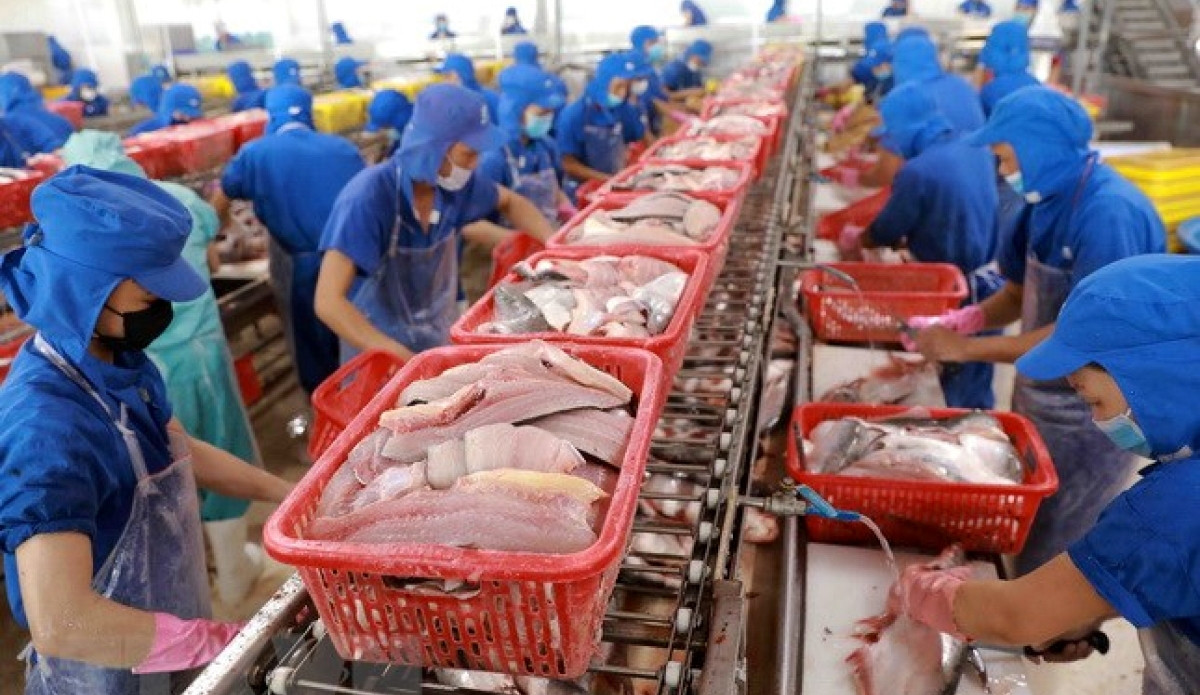
Huge benefits from FTAs

Despite facing difficulties and challenges during the opening four months of the year, Vietnamese exports recovered strongly to reach US$122.4 billion, a rise of 16.4% over the same period from last year. This impressive export growth brought the country’s four-month trade value to US$242.19 billion, a year-on-year increase of 15.8%.
This outstanding performance can largely be attributed to the efforts of local firms, their resilience and creativity, as well as the strength of FTAs signed, especially new generation FTAs. Among these deals are the Comprehensive and Progressive Agreement for Trans-Pacific Partnership (CPTPP), the EU-Vietnam Free Trade Agreement (EVFTA), the UK-Vietnam Free Trade Agreement (UKVFTA), and most recently the Regional Comprehensive Economic Partnership (RCEP) Agreement.
According to Nguyen Chanh Phuong, vice president of Ho Chi Minh City Handicraft and Wood Industry Association (HAWA), new generation FTAs such as the EVFTA and the CPTPP have assisted the Vietnamese wood processing industry to boost exports to many markets, and increase the competitiveness of their products against those of other countries, especially countries without such agreements. Evidence for this can be seen in wooden furniture exports increasing sharply, led by living room and dining room furniture, followed by bedroom furniture.
Meanwhile, Nguyen Ha, a tuna market expert of the Vietnam Association of Seafood Exporters and Producers (VASEP), reveals the first quarter of the year saw Vietnamese tuna exports rise 72% annually to over US$259 million, representing an increase of 1.6 times from the pre-pandemic period in 2019. This figure is the highest tuna export value compared to the same period over the past five years.
Thanks to the EVFTA, Vietnamese tuna exports to the EU inched up by 33% in the first quarter alone to US$38 million.
Assoc. Prof. Dr. Nguyen Thuong Lang of the National Economics University, notes FTAs can be considered the catalyst for promoting bilateral and multilateral trade between Vietnam and developed countries.
Along with the efforts of businesses, as well as the opportunities that FTAs bring, import-export this year is expected to boom and reach a new record of US$750 billion, says Dr. Lang.
Untapped opportunities from FTAs
Economic experts agree the opportunities that FTAs bring to local enterprises are huge, although businesses have yet to take full advantage of these opportunities due to some limitations, in which logistics autonomy is considered the biggest bottleneck.
Vietnam needs to improve policies and laws on logistics services, with a focus on building a fleet of super-long and super-heavy ships along with modern logistics infrastructure that is capable of meeting import-export needs. This means the country will no longer rely on the fleet of foreign ships as it does now, suggests Vu Tuan Anh, president of the Junior Chamber International (JCI) Vietnam.
According to Tran Thanh Hai, deputy director of the Import-Export Department under the Ministry of Industry and Trade, businesses must clearly understand what advantages FTAs can bring to their fields. It is essential to gain this level of understanding so that they can alter the production process, change the supply of raw materials, meet the requirements relating to the origin of goods, and enjoy the preferential tax rates that FTAs offer.
The fact is that while the majority of FTAs mainly focus on cutting tax lines, many partners still pursue trade protectionism by erecting new technical barriers and imposing other strict requirements, such as those relating to labour issues, environmental protection, goods origin, or input materials.
Consequently, although tariff barriers have been reduced, non-tariff barriers are increased, thereby causing Vietnamese businesses to face difficulties. In other words, businesses are ineligible to enter new markets if they do not improve their business models, upgrade services and products, and re-arrange the input supply chain.
Source: VOV